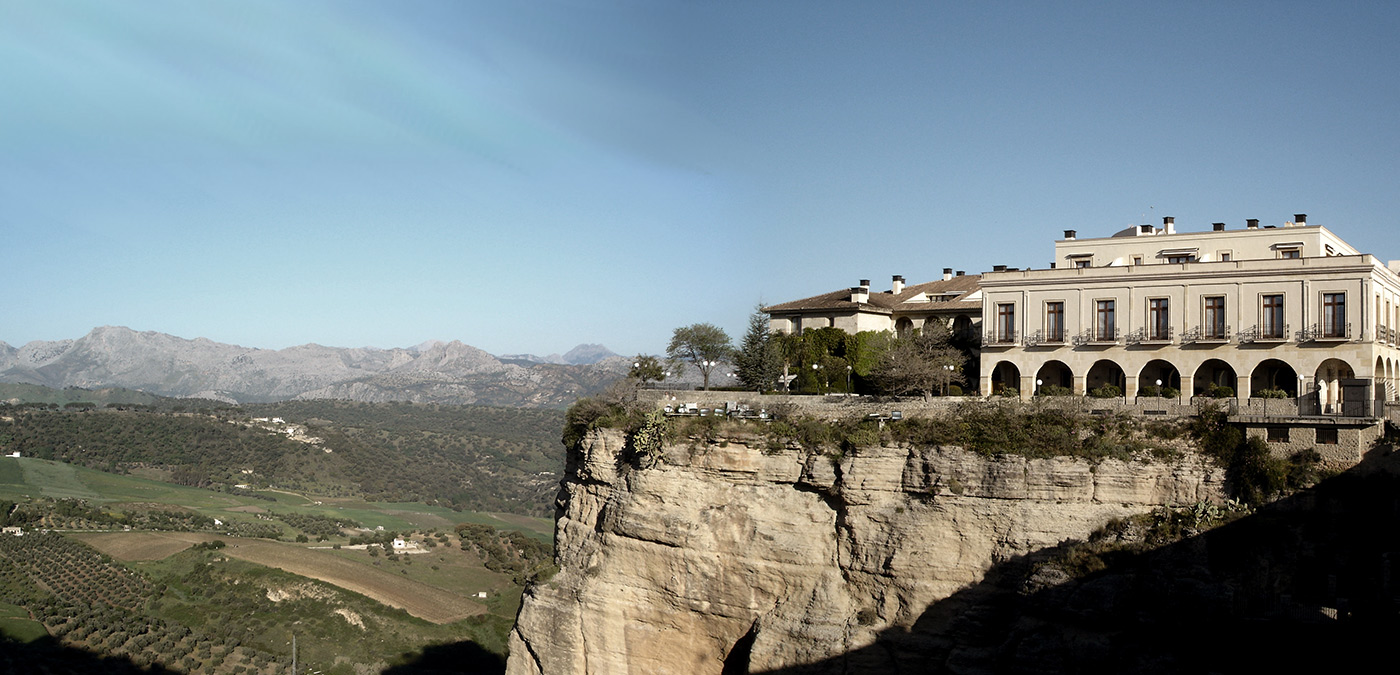paradores route

Spanish Paradores are luxury hotel accommodations in castles, palaces, fortresses, convents, monasteries and other historical buildings. The group also has a few modern Spanish hotels, built in traditional style, in areas of outstanding beauty. The building is often part of the heritage of Spain. Funded and maintained by the government, Spain’s Paradores are hostelries that showcase a building or setting of important cultural and historical interest. Paradores hotels are found in some of the most beautiful corners of the Iberian Peninsula.
Discover Spain through its Parador Hotels while going on cultural routes, playing golf, enjoying adventure experiences, water sports or excursions to National Parks… Get to know our gastronomy or just relax and enjoy yourself! We can organize a Paradores route to fit all of your needs.
Below are the country’s most interesting and unusual Paradors:
Parador de Avila, Avila: Built as an enlargement of a 15th-century palace (Palacio de Piedras Albas, also known as Palacio de Benavides), this Parador features gardens that flank the northern fortifications of this well-preserved 11th-century walled city.
Parador de Cuenca, Cuenca: This 16th-century building, once a Dominican convent, is one of the newest Paradors in Spain. The balconies here jut over rocky cliffs, overlooking a swift-moving river below. The sight of casas colgadas, or “suspended houses,” which Cuenca is famous for, is unforgettable.
Parador de Turismo de Toledo, Toledo: Although this is a relatively modern building, the architecture subtly evokes much older models. Views from the windows, boasting faraway glimpses of the city’s historic core, evoke the scenes El Greco painted in his View of Toledo. A swimming pool is a welcome relief in blistering Toledo.
Parador Hostal San Marcos, León: Originally it was home to the Order of Santiago (a group of knights charged with protecting journeying pilgrims). The building was expanded and converted into a monastery. Nowadays, it’s one of Spain’s most deluxe Paradors. The public areas are pure medieval grandeur: a dramatic lobby, a huge cast-iron chandelier, and stone staircases.
Parador de Zamora, Zamora: This one-time Moorish fortress-turned-to-Renaissance palace is among the most beautiful and richly decorated Paradors in Spain. A medieval aura is reflected in the details: armor, coats of arms, tapestries, and attractive four-poster beds. A swimming pool enhances the tranquil back garden.
Parador de Cáceres, Cáceres: Live like royalty at this palace, built in the 1400s on the site of Arab fortifications. The Parador is in the city’s Old Quarter, recently declared a World Heritage site. The spacious public areas are decorated with soft cream shades and rough-hewn ceiling beams.
Parador de Trujillo, Trujillo: Set in the inviting 16th-century convent of Santa Clara, this Parador was originally built in a combination of medieval and Renaissance styles. The building was transformed into a hotel in 1984; the guest rooms are considerably more extravagant than they were during their stint as nuns’ cells. The cuisine is the best in town.
Parador de Mérida, Mérida: A 16th-century building that was various times a convent and prison. Mudéjar, Roman, and Visigothic elements adorn the interior in unusual but stunning juxtaposition. The inner courtyard and Mozarabic gardens add graceful notes.
Parador de Santillana Gil Blas, Santillana del Mar: This bucolic Parador recalls the manor houses that dotted northern Spain’s verdant hillsides more than 400 years ago. Composed of thick stone walls and heavy timbers, it’s pleasantly isolated and elegantly countrified. A bonus is its proximity to what has been called “the Sistine Chapel of prehistoric art” — the Caves of Altamira.
Parador de Ronda, Ronda: The Ronda Parador sits on its perch overlooking the heart of Andalucia. No hotel in Spain is as spectacularly located or as majestic in its situation. Ronda Parador rests on one of the most spectacular viewpoints in all of Spain. The vast olive orchards and rolling hills of Andalucia stretch out below – as far as the eye can see. The Parador hotel sits right on the very edge of the awe-inspiring “El Tajo” gorge, and there is a sheer drop of nearly 400 feet to the river below. Its incredible location is enough to draw visitors from around the world, but there is much more here that will fascinate even the most worldly and savvy of travelers.
Parador de Pontevedra, Pontevedra: The building is a 16th-century Renaissance palace. It’s famous for being one of Spain’s first Paradors. Inaugurated in 1955, its success led to the amplification of the Parador’s program. The hotel is still alluring today, with its delightful terrace garden and stately dining room, which serves the fresh fish and seafood for which Galicia is known.
Hostal de Los Reyes Católicos, Santiago de Compostela: We saved the best for last. The hotel was built as a royal hospital in 1499 to accommodate pilgrims traveling to Santiago. Today, it continues to invite visitors to enjoy a city that is as universal as it is fascinating. Inside this Parador Museum, considered the oldest hotel in the world, you will discover four beautiful cloisters, elegant rooms, spectacular guest rooms and a luxurious dining room that offers fish and meat prepared in the Galician style.
